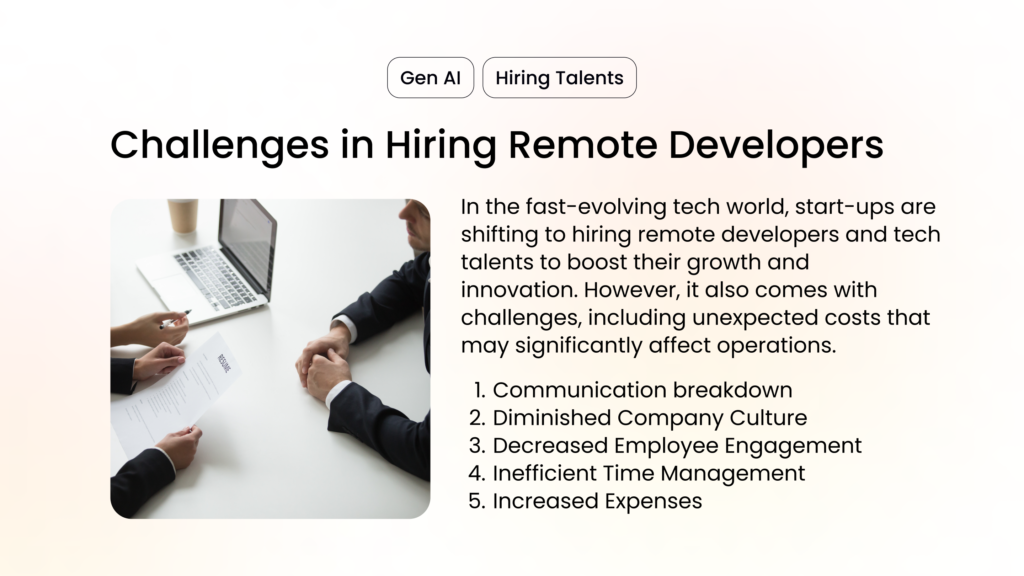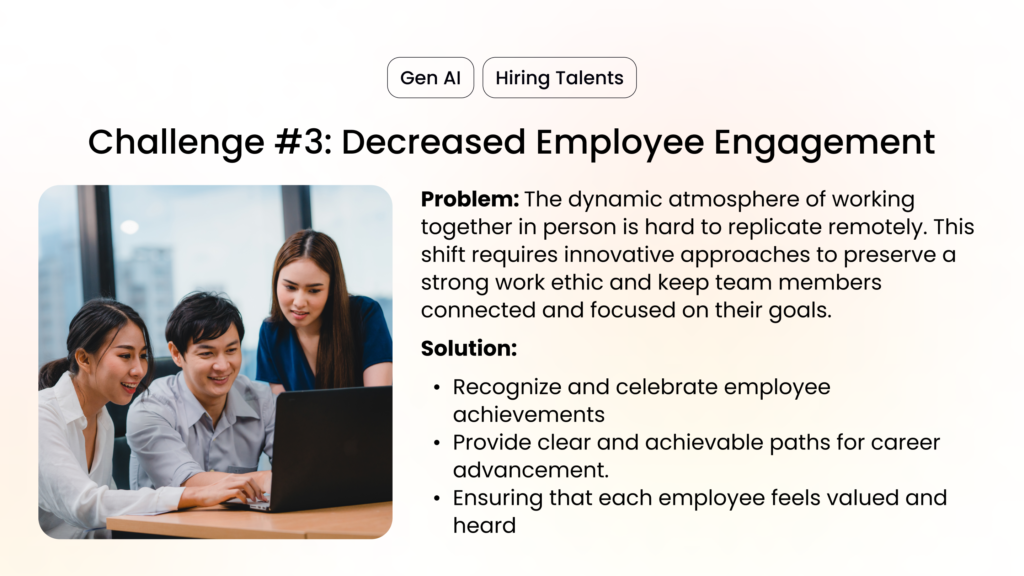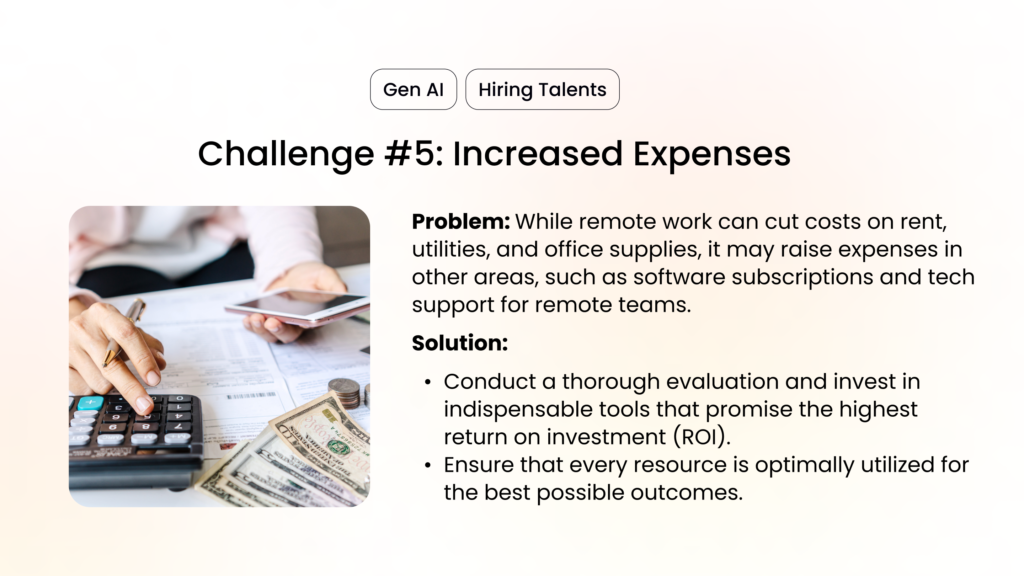In the fast-evolving tech world, start-ups are shifting to hiring remote developers and tech talents to boost their growth and innovation. This move brings great flexibility and access to global talent.
However, it also comes with challenges, including unexpected costs that may significantly affect operations. The appeal of hiring remote developers, promising high productivity and lower costs, is strong, but it’s crucial to consider its potential drawbacks carefully.
Federal Reserve Bank of Atlanta’s July 2023 survey illuminated an interesting trend: about 11.2% of executives expect their organizations to be fully remote by 2028. This seismic shift is not without its hurdles.
Numerous leaders express concern over the diminishing levels of collaboration and communication, the risk of employee isolation, and the potential erosion of company culture. Left unaddressed, these challenges can evolve into significant barriers, impacting a company’s growth and profitability.
This article delves into the specific hurdles start-ups encounter when employing remote developers, offering actionable strategies to navigate these obstacles effectively, thereby ensuring your business thrives in the digital age.

Challenges in Hiring Remote Developers for Start-ups
1. Communication Breakdown
The lack of face-to-face interactions in a digital or remote work environment can lead to misunderstandings, as non-verbal cues are absent, and communication is solely reliant on written or digital means. This can often result in delays in project timelines and can potentially harm the overall dynamics of teamwork.
Solution: To maintain clarity and alignment on projects, it’s crucial to incorporate robust communication tools and conduct regular check-ins.
The market offers a variety of tools designed to enhance communication strategies by optimizing the company’s operations such as Slack, Chanty, Google Chat, and Microsoft Team. These platforms provide group chats, instant messaging, status visibility, real-time notifications, video calls, file sharing, announcement tools, reminders, calendar syncing, search modifiers, and easy navigation. Using these features promotes efficient collaboration through streamlined processes.
2. Diminished Company Culture
Remote work, while offering flexibility and comfort, can pose significant challenges when it comes to fostering a strong and cohesive team spirit. The lack of physical presence and face-to-face interactions can make it difficult for team members to form the same bonds and understanding they might in a traditional office setting.

Solution: Foster a vibrant and engaging virtual culture by organizing team-building activities that promote collaboration and camaraderie among team members. Implement virtual coffee breaks to give everyone a chance to unwind and socialize, simulating the informal interactions of an office environment. Maintain an open-door policy for feedback, encouraging open and honest communication, and ensuring that every team member feels heard and valued.
This approach not only enhances team dynamics but also boosts overall morale and productivity in a remote setting.
3. Decreased Employee Engagement
In the absence of a traditional physical office environment, it can be challenging to maintain high levels of motivation and engagement among employees. The dynamic atmosphere of working together in person, which naturally fosters teamwork and a sense of community, is hard to replicate remotely. This shift requires innovative approaches to preserve a strong work ethic and keep team members connected and focused on their goals.

Solution: To foster a positive work environment, it’s crucial to recognize and celebrate employee achievements, no matter how big or small. Additionally, providing clear and achievable paths for career advancement motivates employees to grow and excel within the company. Ensuring that each employee feels valued and heard enhances team cohesion and overall job satisfaction.
4. Inefficient Time Management
The flexibility offered by remote work, while advantageous, can sometimes result in procrastination due to a lack of structured environment or, conversely, lead to overworking as the boundaries between work and personal life blur.
Solution: To improve productivity and employee satisfaction, it’s crucial to encourage the use of time management tools. These tools can help employees better organize their workloads and prioritize tasks.
Additionally, promoting a healthy work-life balance is essential. This can be achieved by offering flexible working hours, allowing employees to adjust their schedules to fit their life commitments better. Implementing necessary breaks throughout the workday is also vital, giving employees time to rest and recharge, which in turn can boost their focus and efficiency.
5. Increased Expenses

While remote work has the potential to significantly reduce the costs associated with maintaining a physical office space, such as rent, utilities, and office supplies, it might lead to an increase in expenses in other areas. Specifically, companies may see a rise in costs related to software subscriptions, as remote teams rely heavily on digital tools for collaboration and productivity. Additionally, there may be a greater need for tech support to assist employees with technical issues in their home offices, further adding to the overall expenses of operating remotely.
Solution: To maximize the efficiency and output of your team, it is critical to conduct a thorough evaluation and invest in indispensable tools that promise the highest return on investment (ROI). By carefully selecting these tools, you can significantly enhance your team’s productivity, ensuring that every resource is optimally utilized for the best possible outcomes.
6. Challenges in Tracking Performance
Monitoring the productivity and performance of remote developers presents unique challenges. Without the ability to physically oversee the work environment, managers must rely on digital tools and communication strategies to ensure tasks are completed efficiently and effectively.
Solution: To ensure success, it’s crucial to set clear, measurable goals and desired outcomes from the outset. This approach allows for a focused direction and provides benchmarks for progress. Additionally, leveraging project management software can significantly enhance efficiency. By using these tools, teams can track their progress in real time, identify any delays or issues promptly, and adjust their strategies accordingly. This combination of clear goal-setting and the use of technology for tracking ensures a structured and effective project management process.
7. Legal & Compliance Issues
Hiring talents from various jurisdictions can lead to complex legal challenges. This includes navigating different employment laws, tax regulations, and compliance requirements, which can vary significantly from one region to another.

Solution: It is crucial to consult with legal experts to accurately navigate the complexities of international employment laws. Doing so will ensure full compliance and avoid potential legal issues. This approach will provide a solid foundation for managing a diverse and global workforce effectively.
At Talent-Cloud Service, we streamline the process of connecting our clients with top-tier overseas developers through direct labor contracts. You enter into a service agreement with Innovators Hub, with payments made directly to us, simplifying the financial transactions. This model promotes a collaborative environment between developers and clients, enabling effortless contract agreements free from concerns about legalities and compliance. Moreover, we provide the flexibility to terminate contracts as necessary, without the burden of severance obligations.
8. Difficulty Identifying Burn-out
Start-up culture is characterized by its high demands for dedication and commitment, which are essential for driving innovation and growth. However, when this is coupled with the isolation often experienced in remote work settings, it can significantly increase the risk of burnout. Employees may find themselves working longer hours without the usual office boundaries, struggling to disconnect, and ultimately facing the detrimental effects of prolonged stress and fatigue.
Solution Foster a workplace culture that values openness and discussion about mental health issues. Encourage employees to take regular breaks to recharge and prevent burnout. Additionally, offer access to support resources such as counseling services and mental health days to promote overall well-being.
The bottom line
Despite these challenges, hiring remote developers remains a key strategy for start-ups aiming to scale in the coming years. It provides access to a broader talent pool, facilitates innovation, and aligns with the growing trend of digital workplaces. Yet, navigating this landscape requires thoughtful approaches to communication, culture, and support structures.
Innovator’s Hub Asia’s Talent-Cloud Service is crafted with these challenges in mind, offering a streamlined path to connect with vetted tech talents globally while minimizing the hurdles of remote developer hiring. By leveraging such resources, start-ups can harness the benefits of a global workforce, propel their growth, and stay ahead in the competitive tech landscape. The future of work is undeniably remote, and with the right strategies, start-ups can thrive in this dynamic environment.






